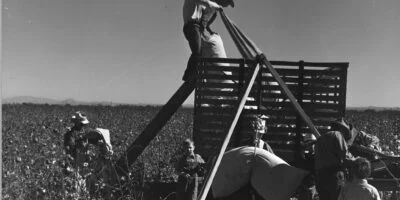The FDA’s Deadly Caution

The FDA saves American lives when its rigorous clinical testing and review process rejects a dangerous drug. However, the FDA also takes American lives. Caution has a price. For every new medical breakthrough that reduces morbidity and mortality, one can reasonably ask how many suffered and died while the FDA checked off its boxes or, worse, rejected the breakthrough outright.
Consider Covid-19. The FDA’s caution with vaccines has been deadly. On December 10, the FDA convened an advisory committee to review the Pfizer/BioNTech Covid-19 vaccine. The next day, the FDA cleared the vaccine for use through a so-called emergency use authorization, or limited approval. Next week, the FDA will hold a similar meeting for Moderna’s vaccine.
Let’s consider the Moderna vaccine with the FDA’s current rules as compared to a hypothetical free market. In a free market, any willing seller can sell to any willing buyer. Yes, this can be scary. For instance, Merck began selling morphine commercially in 1827, and any buyer could have acquired morphine from any willing pharmacist. Before you recoil at the concept, remember that opioid abuse didn’t become a significant problem until 2010, decades after the federal government clamped down on the sale of so-called scheduled drugs such as morphine.
You may be surprised to learn how quickly and early the Moderna vaccine was developed. On January 11 of this year, China’s Yong-Zhen Zhang distributed the genetic code of the virus that has since been named SARS-CoV-2. The Moderna lab in Massachusetts took all of one weekend to formulate the vaccine, which was ready on Monday, January 13. David Wallace-Wells of New York magazine writes, “It was completed before China had even acknowledged that the disease could be transmitted from human to human, more than a week before the first confirmed coronavirus case in the United States.”
Here’s the timeline:
- January 13, the mRNA-1273 vaccine is formulated
- February 7, the first clinical batch is produced
- February 24, Moderna ships the first batch to the NIH for a Phase 1 clinical trial
- March 4, the FDA gives permission to conduct a Phase 1 clinical trial (safety only)
- March 16, the first human subject is given a dose
- March 23, Moderna begins scaling up for commercial production
- March 27, another Phase 1 clinical trial begins
- April 27, Moderna ask the FDA for permission to run a Phase 2 clinical trial (safety and efficacy in a limited number of test subjects)
- May 1, Moderna and Lonza announce a plan to manufacture a billion doses a year
- May 12, the FDA gives Moderna Fast Track designation for mRNA-1273
- May 18, Moderna announces positive Phase 1 clinical results
- May 29, the first test subjects are dosed in a Phase 2 clinical trial
- July 14, Phase 1 results are published
- July 27, a Phase 3 clinical trial begins (safety and efficacy in a large number of test subjects)
- July 28, non-human primate study results are published
- November 16, Phase 3 results show the vaccine is 94.5% effective at preventing infections
- November 30, the FDA announces that it will convene an advisory committee meeting on December 17
- December 2, the U.K. approves a similar vaccine from Pfizer and BioNTech
- December 11, the FDA gives the Pfizer/BioNTech vaccine an emergency use authorization
The human toll from this virus has been considerable. Currently, 297,000 Americans have died and thousands more are joining them every day. The pandemic has been raging for about 280 days, which means that about 1,000 have died each day. For every day earlier that the pandemic ends, approximately 1,000 Americans won’t unnecessarily die. This estimate is an understatement because each person who becomes immune to the SARS-CoV-2 virus protects those around him through the process known as herd immunity.
While counterfactual timelines are hypothetical, we can consider what might have happened with a free market for drugs and vaccines. We don’t know the thinking of Moderna’s team—remember that each transaction requires a willing seller—so here are some possible scenarios, expanding on the ideas of the Hoover Institution’s John Cochrane.
Early Vaccine Sales
The earliest Moderna probably would have sold the mRNA-1273 vaccine would have been after it began scaling up manufacturing. A company doesn’t begin manufacturing until it believes in a product. In the timeline above, that’s March 23. But manufacturing takes some time to get going. Let’s assume that by April 1, five weeks from the date the first batch was shipped, Moderna begins offering mRNA-1273 for sale.
Sales start slowly. Supplies are limited. Only the bold and brave get inoculated. The rest of us, and Moderna, get some early, albeit messy, safety and efficacy data. This data helps Moderna improve the vaccine, dose, and dosing schedule. Having a ready market and a steady source of revenue, Moderna scales up production faster than in the timeline above.
In this scenario, inoculations could have begun at least 8.5 months earlier and, perhaps, the pandemic would have ended 240 days and 240,000 lives earlier. There’s little talk of lockdowns and the economy remains resilient.
Middle Vaccine Sales
Moderna might be more conservative and would not start selling its vaccine until July 1, when more was known. Moderna continues randomized, controlled clinical trials until this date. The same process described above takes place but at an accelerated pace. Inoculations could begin at least 5.5 months earlier and, perhaps, the pandemic would end 160 days and 160,000 lives earlier. Lockdowns are loosened.
Late Vaccine Sales
Moderna certainly would have been willing to sell its vaccine on November 16, when the glowing Phase 3 results were made public. In this scenario, inoculations could begin at least a full month earlier than the FDA will allow. In this scenario, the pandemic would end 30 days and 30,000 lives earlier.
The range of the results shows that the FDA’s processes and actions—even though the FDA has acted incredibly fast in this situation—have killed between 30,000 and 240,000 Americans.
Maybe you wouldn’t have taken the Moderna vaccine months before the full clinical results were known. That’s fine. Americans don’t need to walk in lockstep. Those of us bolder, braver, or feeling more exposed to Covid-19 would have welcomed the vaccine sooner. Those of us more timid, skeptical, or protected from Covid-19 might still wait a year to get vaccinated. Many of us are in between.
Any discussion of the lives saved by the FDA must include estimates of the lives lost due to that very same agency. Two thousand Americans are dying each and every day while there’s a savior in a syringe sitting in a warehouse ready to protect us.












